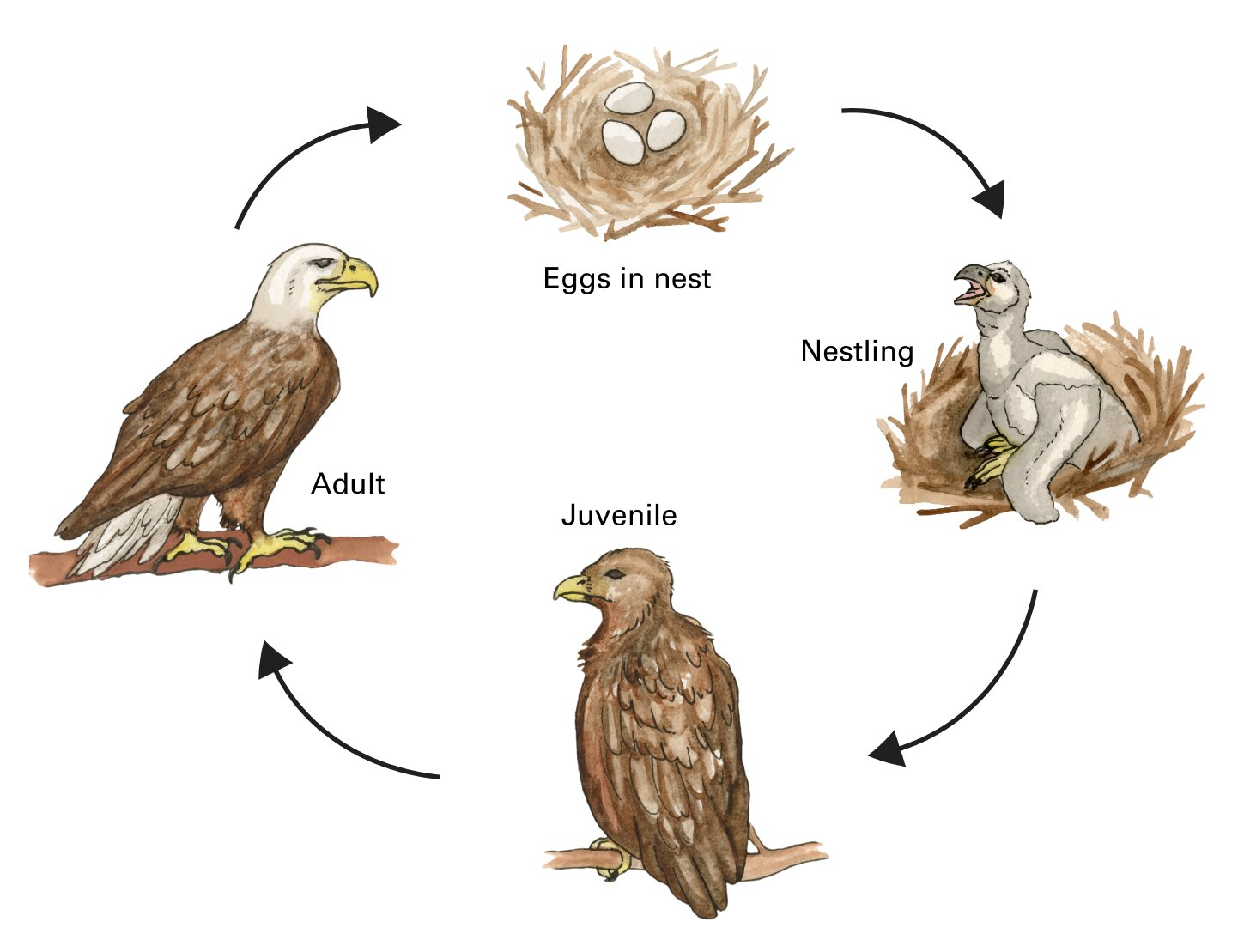The life cycle of an eagle begins with the eagle egg, which is laid by the female eagle in a nest made of sticks and branches. The eggs are incubated for about 35 to 45 days, during which time the male and female take turns keeping them warm. Once the eggs hatch, the eaglets are cared for by both parents, who feed them and protect them from predators.
As the eaglets grow, they begin to develop their adult feathers and learn to fly. This process takes about 12 to 14 weeks. Once they are capable of flying, the eaglets leave the nest and begin to explore their surroundings.
Eagles reach sexual maturity at the age of 4 to 5 years old, at this time they form a pair bond and start to build their nest. The process of courtship and mating begins and the female lays eggs in the nest. The cycle begins again.
Eagles can live for 20-30 years in the wild.
Eagles are apex predators, and play important role in maintaining balance in the ecosystem. Due to habitat destruction and pesticide poisoning, many species of eagles are facing population decline and are considered endangered.





